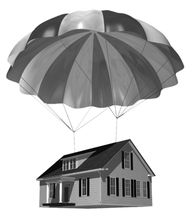CHAPTER TWO
THE INDUSTRIAL MARKET
It’s all about massive distribution facilities; Corporate America is not distributing its largesse evenly across the country
After the dot-com blowup at the turn of the millennium, the After the dot-com blowup et the turn of the millennium,the industrial real estate market went askew. For four consecutive years, 2001 through 2004, the average vacancy rate on the national level ran at double digits. Depending on whose numbers you look at, the very worst year was 2003, when vacancies climbed all the way to 11 percent.
Eleven percent! In the office sector, when a city gets down to 11 percent it’s considered a healthy market. Already some communities are exhibiting office vacancies in the 20 to 25 percent range. When we look at something like 11 percent in industrial, we wonder where’s the panic? This is especially so when in the best years, vacancy rates are generally in the 7+ percent range.
The difference between bad years and good years in industrial real estate is often less than 4 percent. Industrial is the savings bond of real estate investing: safe, stable, and relatively boring.
“It is one of the more stable assets in commercial real estate as it does not fluctuate up or down as much as office or retail. It’s more akin to the apartment business in terms of risk profile,” notes Brad Copeland, a director at ING Clarion, a firm that has been ...


